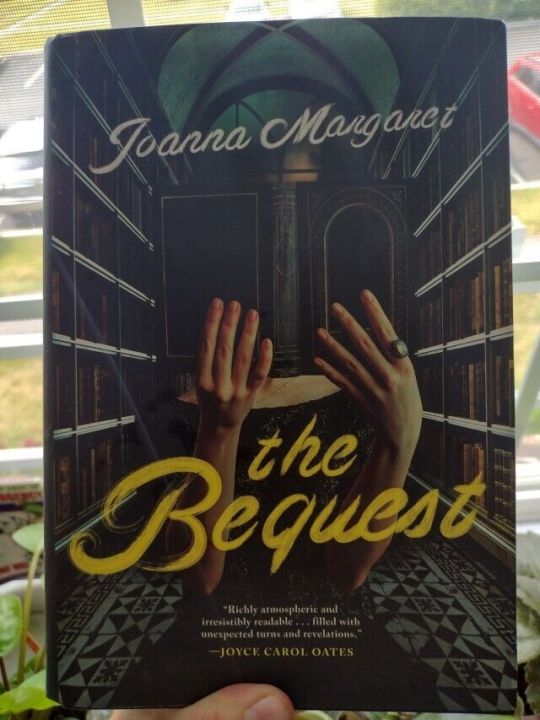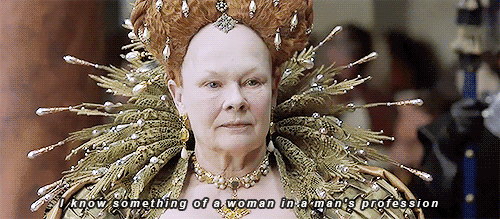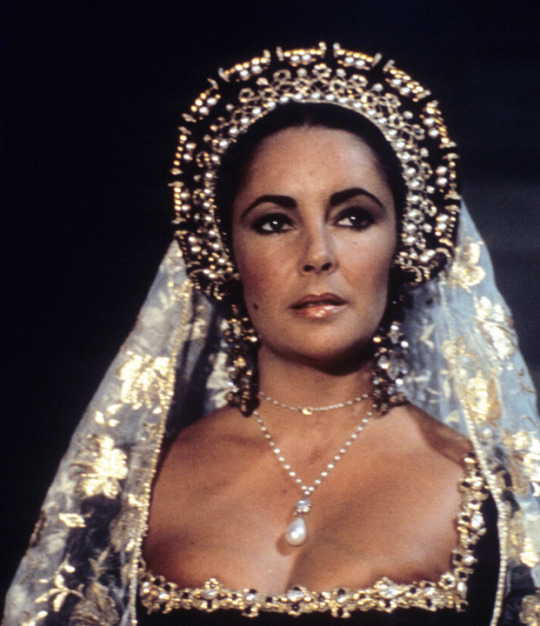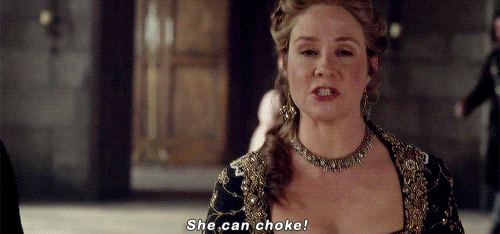#Catherine de Medici book review
Text
Book Review ╽Blood, Fire & Gold: The Story of Elizabeth I & Catherine de Medici
“One might well wonder what thoughts came into Elizabeth’s mind when
she read the letter describing her mother’s death – Elizabeth never forgot
her mother or the lessons her death taught her. Cast out of court after
Anne’s demise, Elizabeth learned that her life would always be in danger…”
Continue reading Untitled

View On WordPress
#biographies#blood fire and gold by estelle paranque#BOOK REVIEWS#BOOKS#Catherine de Medici book review#Comparative analysis of Queen Elizabeth I and Catherine de Medici&039;s reigns#Elizabeth I rivalry#history#Intriguing historical account of Elizabeth I and Catherine de Medici rivalry#Political maneuvering and power struggle in Elizabethan England#Rivalry in history#ROYAL HISTORY
1 note
·
View note
Text
She continued, 'After all, there was another cause which would convince your queen and Catherine to pursue a good amity. There was an old acquaintance between your queen's mother and the queen regent, when the former was one of the maids-of-honour of Queen Claude, sister of Renee of France, my own mother-in-law and dear friend to Catherine de Medici herself. They were friendly towards another. There is no reason for Elizabeth and Catherine not to continue that friendship.'
The mention of Anne Boleyn stunned the English ambassador; it had never crossed his mind that the reputation of Elizabeth's mother in France could be used as a diplomatic tool to reinforce Anglo-French relations.
Blood, Fire and Gold: The Story of Elizabeth I & Catherine de Medici, Estelle Paranque
#lots of compelling insights from this book#like that the french court suppressed a book which 'slandered' anne boleyn in 1562#had it been published in the midst of the timeline of marian england#it would not have been considered slander; one imagines.....#estelle paranque#elizabethan#anne boleyn#renee of france#catherine de medici#anyway posting this also bcus some of the HTF reviews have been. annoying#'aha isn't it funny anne had no friends that were women. isn't that telling. aha'#nicholas throckmorton
47 notes
·
View notes
Note
hey so I know perception of and regard for various standards of beauty varied drastically over time and also by gender but I have seen 4 or 5 different English History "documentaries" (a napoleonic, a romano-british, 2 or 3 tudor) in which passing mention was made of a king/general/potential groom is described as fat and it's framed as unambiguously negative; do you have some thoughts or maybe sources about historical perspectives on this particular element of a person's appearance?
Okay, I KNEW that I had written an answer about this a while ago, in response to a weird and dickish anon, and surprisingly, I was actually able to find it (I guess someone sacrificed a black rooster to the Tumblr search gods at midnight, or something). Anyway, here is part of what I wrote last time:
For much of history, the “fat” figure was regarded and socially conceptualized quite differently. Georges Vigarello has written The Metamorphoses of Fat: A History of Obesity, which traced how discriminatory attitudes toward obesity, the correlation of obesity with weak moral character or other flaws, and the modern association of beauty with slenderness developed in the 17th and particularly the 18th centuries, assuming final form for the demanded body image for both genders around the 1920s. Medieval monks wrote tracts about and had some concern with the deadly sin of gluttony, but it was not understood in the same way as modern anti-obesity polemics, and there was not a correlation of fatness with morality. Katherine Harvey at the Centre for Medical Humanities has reviewed and summarized Vigarello’s book, while pointing out some of its limitations and flaws in methodology, especially from a medieval perspective. While there is some truth in the fact that full-figured bodies were admired as a sign of luxury and a sign that the person did not have to struggle to eat, we also cannot simplistically assume that everyone in the Middle Ages was close to starving and that this dictated their response to and appreciation of this form.
Fat people existed, because – surprise! – they are people, and they wielded considerable authority and respect in their milieu. Probably the best example is Louis VI of France (r. 1108–37), often known as “Louis the Fat,” but also as “Louis the Fighter,” who is regarded as the first strong king in medieval France since Charlemagne, commanded considerable respect from his peers and vassals, and was the subject of one of our first comprehensive royal biographies: The Deeds of Louis the Fat or Gesta Ludovici Grossi written by his loyal advisor, Abbot Suger of Saint-Denis. You’ll note that the use of that title does not implicitly exclude, shame, or denigrate the fact that this was Louis’ commonplace nickname. Louis’ fatness, while it eventually caused tactical problems for him in leading armies, was not connected to a judgment on his fitness as a king, and again demonstrates that our own attitudes to obesity have been socially constructed by the same process as our opinions (frankly, often equally problematic) on other things, and are open to question and revision.
Furthermore, the idea that we should ban fat people from Renaissance Faires, aside from being offensive, is baffling because… have you seen Renaissance art? Particularly that of Peter Paul Rubens, whose propensity for full-figured women depicted as desirable and sexual gave rise to the description “Rubenesque.” You can see many of his portraits on Wikipedia, or read a review of his usage of the female nude, or consider the gender politics and poetics of his depictions of Catherine de Medici, Queen of France.
Anyway, I think that about covers it. The important thing I want to highlight, as mentioned in the first paragraph, is that I sometimes see the argument that premodern people respected fatness as a sign that someone wasn't on the brink of starving to death (as we incorrectly assume that everyone before the 20th century was constantly doing!) While there is perhaps some limited amount of truth to that, there's also the fact that our present obsession with super-slim, super-"sexy!" bodies is a direct result of social/mass media, heavily airbrushed advertisements, modern beauty techniques/standards, and everything else that has made it possible for everyone around the world to have that image universally (and unrealistically) held up as The Only Way To Be Beautiful. Premodern bodies were... just bodies, ordinary bodies, the way people have them now! And since there was neither a widely available mechanism nor a particular social expectation for them to look a particular way (besides, you need to have a strong/stocky/muscular form to do manual labor and/or physical work, and that was ALSO admired!), there are plenty of instances of heavier people pictured as socially and sexually desirable, and it was not a "bad thing" in the way that modern fatphobia frames it.
The Vigarello source is particularly useful in describing the evolution of the slender body as the sole preferred Western beauty standard, but as noted, that process was not complete until the early 20th century, and first gained steam during the 18th century (as slenderness became associated with vigorous health, exercise, personal moral fiber/self control, and other Enlightenment values). So anything before that is not stigmatized in the same way, and to do so is definitely an imposition of modern beliefs/prejudices.
55 notes
·
View notes
Text

Book review: The Bequest by Joanna Margaret
This book is about a graduate student named Isabel from the US who goes to Scotland to pursue her PhD at St. Andrew's. Upon arriving, she finds out that the famous historian who was to be her advisor died by falling off a cliff - later it is ruled a suicide. She gets a new advisor and starts researching her topic on the women of Catherine de' Medici's court, while trying to shrug off the seemingly nonchalant attitude of the other students and faculty towards her advisor's death. She has one friend there that she went to school with in the US, a slightly older student named Rose.
Rose begins to talk about her dissertation topic, the Falcone family and their influence on European politics, with Isabel. Isabel discovers that there is some overlap between their topics. One day, Rose takes Isabel out for a trip and lavishes her with expensive dinners and a dress. She also mentions to Isabel that she has gotten into some trouble and may need her help, but doesn't go into specifics. Shortly after she gives Isabel another gift, a vase that she tells her not to open until the 25th anniversary of their friendship.
Rose goes missing not long after that. A note is found, and the police assume she killed herself. But Isabel opens the vase Rose gave her, and finds a recording saying that people looking for a lost emerald owned by the Falcones have captured her, and she needs Isabel's help to find the emerald or they will both be killed. Isabel takes over Rose's dissertation topic, and goes to Genoa, Florence, and Paris to research all she can about the Falcones.
........................................................................................................................
Reading the synopsis I thought this book had potential (I love Catherine de' Medici) but it was quite bad. There was a lot of stuff that irritated me. Isabel was on anti-depressants and decided to flush them and stop taking them cold-turkey during one of the most stressful times of her life. She suffers no consequences from this other than bad headaches, which is not realistic. At one point the emerald is thrown on the floor and is shattered, and if it was really as pure and perfect as described, it wouldn't have. Isabel also ignores so many blatant signs of narcissism in Rose and warning signs in other people that its frustrating. Some scenes also just don't make sense. Like one of the living Falcones thought Isabel tried to steal documents from their archive, so he attempts to rape her. But then later he emails her promising leads to other documents? Also, the sister of said attempted rapist Falcone invited Isabel to her tower bedroom in Genoa to try on a corset, and Isabel just did? Then Isabel, after stripping in from of them to put on the corset, went back to the library to do research in the corset? Because that's something historians do all the time. This book was just bizarre.
14 notes
·
View notes
Text


Releases on May 13th
Summary:
Cordelia Cranfield is a lady-in-waiting determined to prove her loyalty to the crown and finds herself enlisted to impersonate Queen Elizabeth I to save her from a deadly plot. Marcus Ruthven is a Scottish spy tasked with kidnapping Elizabeth, but then finds himself unexpectedly attracted to the "Virgin Queen". Cordelia and Marcus must work together to foil Catherine De' Medici's plot to keep Elizabeth under her thumb permanently.
My review:
I personally enjoy historical romances set outside Regency England, so I thought the Elizabethan England setting was novel and had a lot of potential. Same for the spy plot that had enormous geopolitical ramifications due the ongoing tensions between Catholics and Protestants in Europe (like, yes please to more Catherine De' Medici doing dubious things). That being said, I think the excitement and intrigue came at the cost of the actual romance of it all, to the point where I have to wonder if this qualifies as a historical romance.
I liked Cordelia and Marcus individually. Marcus is your classic gruff-but-honorable (and biiiiiiig) Scottish hero, and Cordelia is a heroine who's ready to face anything thrown her way. A true patriot. And I thought their relationship was built up really nicely in the first half of the story starting from when he rescued her, culminating in them having sex for the first time. I thought it was hilarious how *conflicted* Marcus was about being attracted to the "queen", especially when there were so many clues Cordelia wasn't an imposter: her lack of pockmarks, intact teeth, and her looking about TWO DECADES younger than the queen to name a few.
Unfortunately, the second half of the story had Marcus and Cordelia separate was vast swarths of time, and their romance felt tossed aside in favor of the spy/kidnapping plot. By the time they were reunited, the romance felt forced and I had to wonder exactly what made them want to spend the rest of their lives together.
The sex:
It's funny to read about a man beating himself up over lusting for the Virgin Queen, but as Cordelia eventually spells out to him, she's not the queen. And she ain't a virgin either.
There was one sex scene, and I thought it was written well. Definitely more on the romantic end of things. I have a theory that because Heather's books (the ones I've read at least) are always so intense and high stakes (compared to a romance set in the regency era), the sex tends to be more tender and affirming in order to contrast.
Overall:
This book wasn't quite for me because the plot overshadowed the romance rather than the two being more intertwined. I would, however, recommend this to anyone looking to dip their toe into non-Regency romances with low heat and a lot of drama.
Thank you to Dragonblade Publishing and NetGalley for the ARC in exchange for my review.
#netgalley#arc#arc review#heather mccollum#historical romance#Dragonblade Publishing#romance novel#romance novels
0 notes
Photo

Recorded history is often dominated by men. Particularly Western History. But there are times, often pivotal times in Western History where women, not men, are the primary movers and shakers of the age. This book takes a look at one such time -- the 1500s and four rulers who were rulers in their own right: Mary Tudor, Elizabeth Tudor, Mary Stuart, and Catherine deMedici.

If you know me, you know that this is a time period that is near and dear to my heart. It was my focus in college and it's something I've studied extensively afterwards. I absolutely adore these disparate queens but I'm not sure I fully adore this book.
First off, it's definitely an interesting choice to only focus on four queens three of whom rule countries on one small island. Especially since there were other queens ruling at this time including: Joan I (Juana la Loca who ruled Spain until 1555), Anna (Queen of Poland), or even Mary of Hungary (who is mentioned in this book but not as someone who ruled... more of as an extension of Philip II of Spain). And one of the queens focused on isn't technically a queen regnant but instead a queen regent... the choice definitely had me tilting my head a bit.

As did the choice to focus so much time and page space to Philip II, who I will grant was super important and powerful... but by devoting so much time to him and by calling him the true ruler of the world the author not only leans very heavily into colonialism and Eurocentrism schools of thought but also negates her own thesis that the ruling women of this time were just as powerful and worthy of ruling as the men.
For instance in the sections on Mary Tudor, more time is spent on Mary's relationship with Philip and Philip's wooing of Elizabeth than on Mary's accomplishments as queen. While there are a few tantalizing sections on how Mary influenced her sister, there isn't nearly enough focus on the deeds and acts of Mary and how she ruled. Indeed, there's more on confusion regarding a piece of jewelry - La Peregrina.

That isn't to say that this book is bad, it isn't. I found the writing readable and the topics well researched. I particularly liked the inclusion of relevant artwork to bolster the author's claims. But that said, I also found the book meandering, repetitive, and occasionally contradictory.
For example, the author states that the pearl that Mary Tudor is well known for wearing in many of her portraits and even on the currency bearing her image is not "La Peregrina" which was found off the coast of Panama and is part of the Spanish crown jewels. That it was La Peregrina that ended up in the collection of Elizabeth Taylor's jewels and not Mary Tudor's pearl. And the author proceeds to show us this with some pretty compelling circumstantial evidence. But then the author ends this chapter by essentially contradicting the whole thrust of her argument that saying that Mary Tudor's pearl would have been a good addition to Elizabeth Taylor's collection.

On the good side, the author while light on Mary's acts does take the more recently accepted viewpoint that Mary Tudor was a kinder and more popular monarch than most people would think. I would have liked more on this, but what is there is definitely more in line with modern historical thought.
For the most part, I enjoyed this book. It didn't make me angry and it's clear that the author cares about the subject. That said, I feel that this needed at least one more pass through with a red pen to weed out all of the repetitiveness, contradictions, and to add a little more rationale on why focus on ONLY these four queens when there were other strong female rulers that are also worthy of the spotlight.
I think I'm going to give this:
Three Stars

If this is your jam, you can get it here.
If you like these kind of honest reviews, please consider supporting us here!
I received an ARC of this book via NetGalley
#book review#non-fiction review#historical nonfiction#european history#Mary Tudor#La Peregrina#Elizabeth Tudor#Philip II#Mary Stuart#catherine de medici#the armada painting#the book was okay#it could have been better#three stars#maureen quilligan#Rose and Lark review books
13 notes
·
View notes
Text

Renaissance Queen and - more importantly - Regent Catherine de Médicis suffers from terrible reputation.
Indeed, even the Garrisson lady who wrote this book has problems explaining Catherine's involvement in the 1572 St Bartholomew massacre which resulted in the gruesome killings of thousands of huguenots.
Despite this, however, it's impossible not to wonder whether, had she been a man, she would not have got away with all of it, her reputation intact. Henry IV did.
Boring book, fierce lady 💪
1 note
·
View note
Text
Catherine de Medici - Leonie Frieda

Summary: The biography follows Catherine de Medici from her birth through the reign of her three sons as king of France while providing a colorful and bloody view of the times she lived in.
Quote: “Anyone presenting her with a superb stallion or broodmare found a sure route to the Queen Mother’s heart. She loved animals especially dogs and birds, though her menagerie also contained some particularly exotic creatures. Apart from the lions that she kept at Amboise, there were a large number of bears of which the Queen was fond; these were kept muzzled and led by nose rings. In the wonderland that Catherine created around herself the bears would often form part of her escort when she travelled; following her litter, closely watched by their keeper, the great beasts would lumber obediently behind the Queen Mother.”
My Rating: 4.0/5.0 Goodreads: 4.0/5.0
Review: A sympathetic but not overly sentimental biography with gorgeous prose and a clear understanding of the historical context that Catherine de Medici inhabited. Though not free from ahistorical language and speculation, the biography is clever and exhilarating. The cast of characters are extremely memorable and Frieda was able to keep the ever shifting loyalties clear throughout the decades that the book covers. The research was obviously thorough and yet the narrative remains constantly interesting.
6 notes
·
View notes
Text
10 Fandoms, 10 Characters, 10 Tags
Rules: make a new post, and post your fave 10 characters from 10 different fandoms
Thank you so much for the tag, @the-october-reviewer!
I’ll be focusing on TV shows, so:
1. Charlie Bradbury — Supernatural (but also Sam, Rowena, Lucifer, Bobby . . .)

2. Sophie Hatter — Howl’s Moving Castle (there’s so much more to her in the books, though)

3. Caroline Forbes — The Vampire Diaries (love her growth; but there’s also Ric and Jo)

4. Klaus Mikaelson — The Originals (he’s just so fascinating, both bad and good)

5. Rumpelstiltskin — Once Upon a Time (seriously, Gold was, well, gold; talk about fascinating)

6. Joey Gladstone — Full House (he may look like a goofball . . .)

7. Merlin — BBC’s Merlin

8. Catherine de Medici — Reign (a finest Queen Bitch; gotta adore Megan Follows)

9. Violet Crowley — Downton Abbey (it’s Maggie Smith; need I say more?)

10. Gregory House — House MD (gotta love Hugh Laurie)

Tagging: @thecharmedburrowspn-files, @darknightfrombeyond, @the-old-fashioned-girl, @ocfairygodmother, @randomestfandoms-ocs, @randomfandoming1, @ocfanhub, @margothedestroyerr, @heirsoflilith, @star-linedsoul, @trench-coat-wearing-angel, and anyone else who wants to do this!
3 notes
·
View notes
Note
The fact that this "Serpent Queen" thing is going to be based on Leonie Frieda's biography on Catherine de Medici... Is it any guarantee of, at least, some very basic accuracy or respect for the facts/the woman? Is this book reliable? (Frieda also wrote about Francis I, and about several Italian Renaissance women, with, ehm... Mixed Reviews)
Well to be fair biographies in general are always very 😬 it's a struggle to find decent ones, so good ones... Yikes. I don't remember huge turn offs in Catherine's so it was decent at least (tho psychology... Yup it's a thing), but Francis' had a couple of things that made me pause for a while and question what I was reading.
Frankly the material could be perfect from start to finish and I'd still expect them to fail. They already can't even put together a decent show based on a novel, so literally a material that's supposedly designed to entertain and be somewhat compelling, so a biography............. Let's just say my expectations are below zero.
#anonymous#Frieda has a somewhat engaging writing style I'll give her that#which is why I think I put her book on a list somewhere#But it's not enough to make a good show
1 note
·
View note
Text
“Where Leonie Frieda comes to grief is in the climax of her Catherine de Medici: St Bartholomew’s. She mounts a gallant defence of Catherine, who, she claims intended a “surgical operation” to protect the monarchy from a war with Spain by eliminating Admiral Coligny, and instigated the attempt to murder him on August 22, 1572. When that failed, and Coligny was only wounded, in a panic that she would be implicated, she bullied Charles IX into agreeing to a wider extermination late on August 23. Thereafter things got out of hand. Unfortunately, there is nothing new in this story – and it is more or less historical fiction. Frieda derives her account from the memoirs of the Marshal de Tavannes and the discours attributed to Henry III, the main “contemporary” sources to implicate Catherine. However, both are totally discredited, as Nicola Sutherland demonstrated convincingly in her now classic book The Massacre of St Bartholomew and the European Crisis (1973). Neither can be traced earlier than the seventeenth century: Tavanne’s account was written by his son and Henry’s discours has been attributed to the Marshal de Retz. Modern scholarship on St Bartholomew’s (ably summarized in Arlette Jouanna’s Histoire et dictionnaire des Guerres de Religion, 1998) absolves Catherine of involvement in the attempt on Coligny and assigns her only a limited role in the wider massacre.”
Simon Adams reviewing Catherine de Medici: A Biography by Leonie Frieda. “Queens’ Moves.” TLS, no. 5267, Mar. 2004, p. 8.
14 notes
·
View notes
Photo

#bookreview #book #bookworm #booklover #bibliophile #reading #booknerd #instabook #bookaholic #cwgortner #read #igreads #bookish #bookaddict #booklove #instabooks #booknerdigans #bookphotography #love #currentlyreading #historicalfiction #bookshelf #reader #booklovers #harrypotter #bookstagram #ilovebooks #goodreads #literature #theconfessionsofcatherinedemedici https://www.instagram.com/p/B5yJUxlATj2/?igshid=ggll990b6rb2
#bookreview#book#bookworm#booklover#bibliophile#reading#booknerd#instabook#bookaholic#cwgortner#read#igreads#bookish#bookaddict#booklove#instabooks#booknerdigans#bookphotography#love#currentlyreading#historicalfiction#bookshelf#reader#booklovers#harrypotter#bookstagram#ilovebooks#goodreads#literature#theconfessionsofcatherinedemedici
0 notes
Note
In my future one-party state, fat people will not be allowed to attend or participate in Renaissance Faires.
Uhhh.
I’m not sure what’s going on here, if you thought you were being funny, or if you thought I would find this funny, but pal, I gotta tell you as nicely as I can: my inbox is not the place for fat-shaming. I hope you only said this to me, rather than a person at a Renaissance Faire doing something that they enjoy, and in which they have every right to participate and then some. I thought about just deleting it, but I decided to take the opportunity to do some educating and opening of a dialogue instead, because that’s what I do. I can’t make you read any of what I say below, or investigate it further, but I encourage you to do so and to examine the preconceptions that you have and why you want to punish fat people for daring to leave the house and take part in hobbies while fat.
Because… for much of history, the “fat” figure was regarded and socially conceptualized quite differently. Georges Vigarello has written The Metamorphoses of Fat: A History of Obesity, which traced how discriminatory attitudes toward obesity, the correlation of obesity with weak moral character or other flaws, and the modern association of beauty with slenderness developed in the 17th and particularly the 18th centuries, assuming final form for the demanded body image for both genders around the 1920s. Medieval monks wrote tracts about and had some concern with the deadly sin of gluttony, but it was not understood in the same way as modern anti-obesity polemics, and there was not a correlation of fatness with morality. Katherine Harvey at the Centre for Medical Humanities has reviewed and summarized Vigarello’s book, while pointing out some of its limitations and flaws in methodology, especially from a medieval perspective. While there is some truth in the fact that full-figured bodies were admired as a sign of luxury and a sign that the person did not have to struggle to eat, we also cannot simplistically assume that everyone in the Middle Ages was close to starving and that this dictated their response to and appreciation of this form.
Fat people existed, because – surprise! – they are people, and they wielded considerable authority and respect in their milieu. Probably the best example is Louis VI of France (r. 1108–37), often known as “Louis the Fat,” but also as “Louis the Fighter,” who is regarded as the first strong king in medieval France since Charlemagne, commanded considerable respect from his peers and vassals, and was the subject of one of our first comprehensive royal biographies: The Deeds of Louis the Fat or Gesta Ludovici Grossi written by his loyal advisor, Abbot Suger of Saint-Denis. You’ll note that the use of that title does not implicitly exclude, shame, or denigrate the fact that this was Louis’ commonplace nickname. Louis’ fatness, while it eventually caused tactical problems for him in leading armies, was not connected to a judgment on his fitness as a king, and again demonstrates that our own attitudes to obesity have been socially constructed by the same process as our opinions (frankly, often equally problematic) on other things, and are open to question and revision.
Furthermore, the idea that we should ban fat people from Renaissance Faires, aside from being offensive, is baffling because… have you seen Renaissance art? Particularly that of Peter Paul Rubens, whose propensity for full-figured women depicted as desirable and sexual gave rise to the description “Rubenesque.” You can see many of his portraits on Wikipedia, or read a review of his usage of the female nude, or consider the gender politics and poetics of his depictions of Catherine de Medici, Queen of France. So if we’re clinging to that tired and much-misunderstood caveat of “historical accuracy,” when Ren Faires are transformative and creative anachronistic spaces anyway, any fat people at a Ren Faire should be especially admired and held up as idealizations of erotic and physical beauty. Because once again: even without the theoretical and historical business, they have as much right to partake in hobbies and daily life because they! are! people! I hope I don’t give off the impression that I would be all that happy about casual exclusionary rhetoric for any other group of people in my inbox, so… yeah.
As someone who has (like many of us) struggled for years with body dysmorphia and self-hatred, and who as a child who wasn’t fat, but was larger/taller than my smaller sisters and was consistently treated in a different way/as a potential danger/like a son because of it, I also have a personal reaction to this sort of rhetoric. Again, I hope that you only said it to me, who can deal with it, rather than someone else who probably has heard this kind of dehumanizing and depressing comments endlessly and does not need more. I urge you again to take a moment to consider why you hold this belief and do some work on it. Because frankly, if that’s your one-party state of the future, I’m not interested.
Cheers.
#history#medieval history#tw fatphobia#i'm... honestly not sure what's going on here#but i have to say this as politely as i can#not cool#and i hope i don't give the impression#of someone who would enjoy endorse or support this#because i don't#and i hope you can do the same#anonymous#ask
50 notes
·
View notes
Text
The Second Jezebel by Peter Mowsbray. Book Review.
The Second Jezebel by Peter Mowsbray. Book Review.
It is interesting that I should receive this book for review just as one of my favorite television series, Reign, is ending. I was interested to know what would happen to Catherine de Medici later in life. The portrayal of Catherine, the second Jezebel, is much harsher in the novel than the television series. I suspect the book is more true to life as the research seems extensive and detailed.
View On WordPress
0 notes
Text
Opening Bell: February 22, 2019

At the end of Election Day in November 2018, it was clear that Democrats had secured a decisive victory in the House of Representatives, flipping several seats that, in some cases, had been in GOP hands for decades, and as a result wresting control of the chamber from the GOP. There were, however, several races which were not decided on Election Day, or even in the days or even weeks after. Gradually, one by one, the votes were tallied in these electoral contests and candidates conceded while others declared victory. This occurred one by one until the only uncertified race remaining was for the 9th Congressional District in North Carolina. Republican Mark Harris had handily won his party’s primary and consistently maintained a lead of around 1,000 votes on subsequent recounts. It was becoming apparent, however, that something odd had occurred within the district in the weeks leading up to Election Day. Over time, a picture began to appear of Harris having engaged the services of shady political operatives, with a history of ethically questionable practices. With so many questions surrounding the behavior of Harris and individuals associated with his campaign, the new Democratic majority in the House of Representatives indicated that they would not permit Harris to be seated in the new Congress until all questions surrounding the election had been resolved. The North Carolina Board of Elections investigated and, at a hearing yesterday, it became clear that Harris knowingly employed as campaign operatives people who intended to interfere with the casting of ballots by voters living in Democratic precincts. Faced with this, Harris abruptly called for a new election and shortly thereafter the Board agreed, and officially ordered that Mark Harris and Dan McReady, his Democratic opponent, who has been raising money for a new campaign since the first week of December, to face voters again in an election which promises to be closely scrutinized. Even if Harris prevails, there remain questions of whether he broke any laws last November.
As soon as the White House first floated the idea of President Donald Trump declaring a national emergency on the border and using his temporarily expanded executive authority to redirect funds already appropriated by congress to the executive branch towards construction of a border wall, speculation stirred that Democrats, and perhaps even some Republicans, in Congress would support legislation to disapprove and oppose this declaration. The declaration is already the subject of multiple lawsuits, but House Speaker Nancy Pelosi (D-Calif.) played her hand slowly until yesterday, when Pelosi announced that a vote on a resolution rejected Trump’s declaration would occur within days. The measure is certain to pass the House, and may even pick up a few Republican votes along the way, but it is less certain of whether the Senate will pass a similar resolution. Should Senate Minority Leader Chuck Schumer (D-NY) peel off enough Republican votes to pass the resolution in the Senate, it would go to Trump’s desk, where he has pledged to veto it. Overriding a presidential veto requires a two-thirds majority in both chambers of Congress and it is highly unlikely that those votes exist in the Senate, therefore the veto will likely stand. In the court of public opinion, however, Democrats will likely have made their point, and the focus will shift towards any ruling on the myriad of lawsuits directed at the declaration. It seems likely that there will be a series of injunctions, stays of the injunctions on appeal, and appeals of those stays. There is not likely to be any decisive outcome in the near future.
Almost from the time he was indicated, arrested, and then released on bond, Trump confidante Roger Stone has been defiant. Within hours of being booked in jail, Stone was appearing on evening cable news shows—not just on Trump-friendly Fox News, but also on CNN and MSNBC—and, true to form, declaring his innocence, attacking the indictment against him by the Office of the Special Counsel, and criticizing the criminal justice system. In response, U.S. District Judge Amy Berman Jackson issued a partial gag order on Stone, which did not include him discussing the Mueller investigation on TV or to surrogates. Stone almost immediately abused the generosity of the court and posted a visual of Amy Berman Jackson on his Instagram account with what appeared to be a cross-hairs in the upper left corner. The image was deleted from his account hours later, but not before Stone was targeted with a torrent of criticism. By the end of the day, Stone had replaced the post with a new one showing a typed and signed apology. Stone was ordered to appear in court Thursday, where he was grilled on the witness stand, under oath, by Judge Amy Berman Jackson over his conduct. Stone apologized, explained that the image of the federal judge was not intended as a threat, only for the court to question why, if the Instagram post was not meant to be a threat, why an apology was necessary. At the end of the hearing, the gag order was expanded and Roger Stone will no longer be able to discuss his indictment or pending trial or ask his surrogates to do so for him, and is prohibited from posting on social media. Any violation of this gag order would likely result in Stone being jailed for the remaining time leading up to his trial. Stone may, however, continue to raise money for his legal defense.
Most Americans are familiar with the Vietnam War due to its role as a cultural touchstone in American culture—and counterculture—of the 1960s and 70s. As a result, certain parts of the war are a part of the American historical lexicon, even among those who are not otherwise knowledgeable of the war itself. One such event is the Tet Offensive; a massive surprise offensive launched by the North Vietnamese Army and Viet Cong across all of South Vietnam starting in late January 1968. While from a military perspective, the offensive was a massive defeat for the NVA and VC—casualties for both were massive and while many of their targets were successfully attacked, the U.S. and South Vietnamese militaries successfully dislodged the NVA and VC from every foothold they captured—but from a public opinion perspective, it signaled to Americans that the war was not on the verge of being won. While much of the Vietnam War was fought in thick jungle and over innumerable rice paddies, during Tet, especially in the northern part of South Vietnam, fighting in cities was extensive and widespread. In Hue, the old imperial capital of Vietnam, NVA and VC units occupied one half of the city, and U.S. Marines were tasked with forcing them out; as one battalion commander remarked, Hue was the first time Marines had engaged in urban warfare since the Korean War. The battle for Hue was bloody and brutal; Marines reduced NVA and VC resistance one city block at a time, at a huge cost, particularly when it came time to attack the historic city center; the fortified Citadel of the old imperial dynasties. In mid-February, either the 15th or the 17th, a Marine was shot in the abdomen, attended to by his fellow Marines and perhaps, some Navy Corpsmen, and then transported on a wooden door used as a stretcher to a tank, which then evacuated him and several other wounded Marines from the combat zone. This scene was captured by photographer John Olson. The identity of the wounded Marine, however, remains controversial to this day: was it Albert Grantham, who had suffered a sucking chest wound that was patched up by his fellow Marines using the cellophane from cigarette packs, or was it James Blaine who was hit in the lower abdomen. The difference is important because Grantham survived his injuries, barely, while Blaine died the same day the photograph was taken…assuming it was taken on the 15th and not the 17th, which is also a point of contention. A picture is worth a thousand words, but it can also be the wellspring of a thousand questions, none of which are easily answered. This is a fascinating examination of a famous wartime photograph and just who is actually in it.
H.L. Mencken once said that the “What the American public doesn’t know, is what makes them the American public.” The focus of the American public—either because of or in spite of the efforts of journalists—does not often follow the rhythms of important events around the world. The focus of Americans is often inward, but when it turns to other parts of the world, it is often due to a notion that the interests, and security, of the nation are directly implicated or threatened. This chart, based on a review of 741,681 headlines, aggregates what Americans were focused on by nation from 1900 to 2018, with highlights noted off to the margins. This is just a fun feature to scroll through and click on.
Throughout history, there have been powerful women who have exercised their power, due to social and cultural constraints, in a manner less brazen than a male would behave placed in the same position. Catherine De Medici, a scion of one of the wealthiest families in Europe, is a prime example of this. The Medici were exceedingly wealthy as one of the great banking families of the Continent, but were not of aristocratic origin; something often held against them. During her 69 years of life, Catherine was used as a pawn while a young girl in Florence and, at once point during a siege of Florence it was suggested by the city’s citizens that she be sacrificed as a sexual slave to the besieging army. Later in life, as a member of the French Valois royal dynasty, Catherine struggled to conceive heirs both for the Valois family and for the Medici. Her failure over her first decade as a French royal caused her husband, Prince Henri, to openly court mistresses. Eventually Catherine did bear children; 10 over 12 years, two of whom sat on the French throne after her husband. During this time, Catherine exercised, as regent, the powers of a monarch in all but name, but knew that she could never rule in the same manner as a man. Catherine was an accomplished political leader who, though her own religious principles were questionable, genuinely sought solutions to the French religious wars of the late 16th century. If she had been male, she would rightly be remembered as a great leader, but instead contemporary history labeled her the “Serpent Queen.” This is not stuffy academic profile. I think any of you who read both parts of this review of Catherine will find the writing accessible and even entertaining. Do read both.
Following up on last week’s review of the situation in Virginia, the University of Virginia’s Center for Politics surveys the positions of the state’s top three elected officials: Gov. Ralph Northam, Lt. Gov. Justin Fairfax, and Attorney General Mark Herring. Polling shows that Virginians, but a double digit margin, do not want Northam to resign, and opposition to Herring is at an even lower level, but Fairfax—who is accused by multiple women of sexual misconduct—is in a far more dangerous situation. Despite all of this, Donald Trump remains unpopular in the Old Dominion, and Democrats, despite their scandals remain in the ascendant in the Commonwealth.
Welcome to the weekend.
#Opening Day#2018 election#North Carolina 9th District#Mark Harris#Dan McReady#elections#election fraud#fraud#congress#Donald Trump#immigration#national emergency#lawsuits#Nancy Pelosi#Chuck Schumer#Mitch McConnell#Roger Stone#Amy Berman Jackson#federal courts#judiciary#gag order#Robert Mueller III#Office of the Special Counsel#history#journalism#photography#Vietnam#John Olson#Tet Offensive#Hue City
0 notes